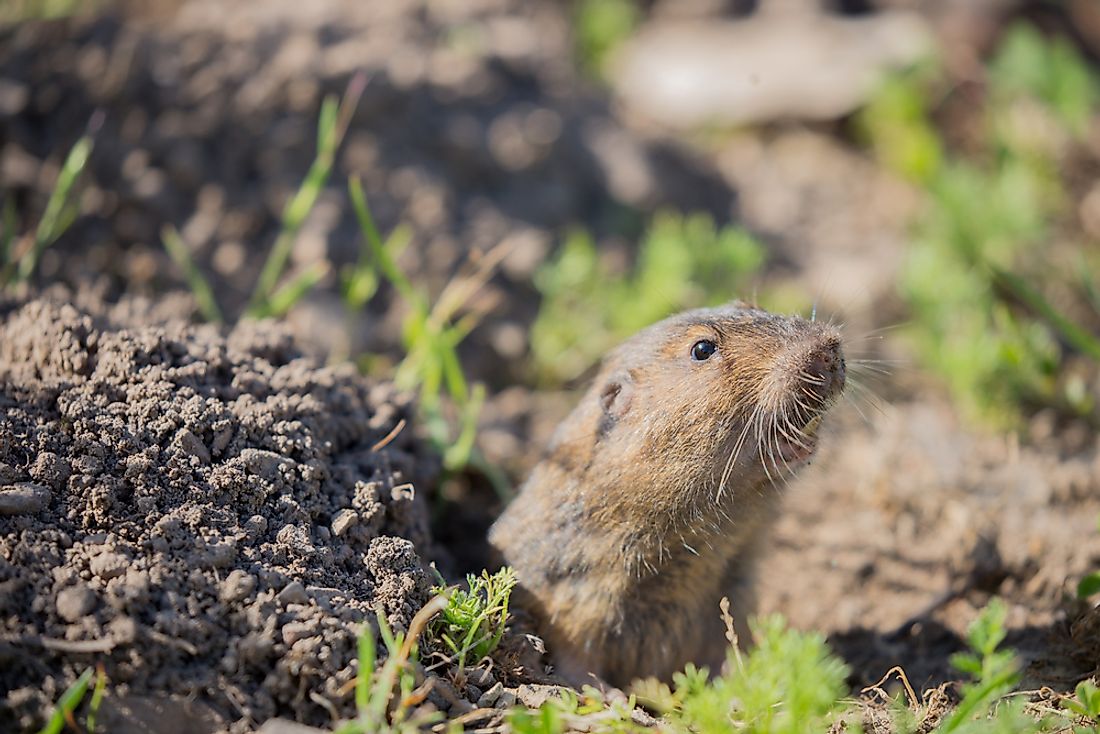Pocket Gopher Facts: Animals of North America

5. Physical Description
A pocket gopher is a burrowing, tailed rodent, with small ears, and eyes. Its fur color can ranges from being any shade from pale brown to almost snow white. Pocket gophers have long curved claws on their proportionally large front limbs, and sharp curved incisors. The lips of a pocket gopher close behind their protruding front incisor teeth. Their adult size ranges from 5 to 14 inches, and they typically achieve weights of around 2 pounds upon the culmination of physical maturation. The "pocket" part of its name is derived from its two fur lined cheek pockets, with openings on either side of their mouths. The US is home to 13 breeds of pocket gopher, according to the University of Nebraska.
4. Diet
A pocket gopher only eats herbivorous fare, including roots, bulbs, rhizome grasses, shrubs, the fleshy portions of plants, leaves, and plant stems. In snowy environments with limited greenery, they will even gnaw on tree bark. The live vegetation they eat provides sufficient moisture, so pocket gophers don’t need other water sources. The incisor teeth of a pocket gopher never stop growing, in order to replenish those that break off when chewing. They have flattened molars, as well as premolars for grinding hard vegetation. Pocket gophers burrow to feed on roots, or emerge to feed on surface vegetation. They may also pull plants by the roots from the bottom down into their burrows to eat them within, while remaining hidden from aboveground predators.
3. Habitat and Range
A pocket gopher's ideal habitat is one with loose, sandy soil, and lots of edible plant cover, such as lawns and crop fields. They can also live in low coastal regions, rocky habitats, and in light-textured soils that are vibrant with herbs. In the US, pocket gophers are most prevalent in the states of Washington, western Oregon, and northern California, according to the US Fish and Wildlife Service. In the US, the Mazama subspecies is the one most endangered, due to a loss of its natural habitat to urbanization. In 2012, a report by the Centre for Biological Diversity reported that only 757 lving members of the Mazama subspecies remained.
2. Behavior
A pocket gopher lives in burrows which can cover between 200 and 2,000 square feet in total, and are 2.5 to 3.5 inches in diameter, according to the University of California. The burrows where a pocket gopher travels feeds within are usually tunneled at a depth of 6 to 12 inches underground, while their food stores are around 6 feet deep. Pocket gophers seal the openings of their burrows with earthen plugs, which they push out to emerge to the surface. A pocket gopher may be active during any and all hours of the day. They live alone within their burrows, except in the cases of females caring for their young ones. They use their sense of smell to locate food, and a female has 3 pairs of nipples to feed her babies.
1. Reproduction
A pocket gopher is a solitary rodent, and generally often only associates with another member of their species when mating. Pocket gophers breed from February until April, and young ones are born underground within the nesting chambers. The gestation period is estimated to last around one month or more, according to a study by the University of Kansas. A female pocket gopher gives birth to 4 young ones in each average litter. The young ones are hairless, pink, and wrinkled at birth, and their eyes and ears are closed. Thereafter, they suckle upon their mothers until weaned. After the eyes open, they are weaned and, after only a few weeks, they disperse from their mothers' nests to begin feeding alone. Pocket gophers reach sexual maturity after about one year.











